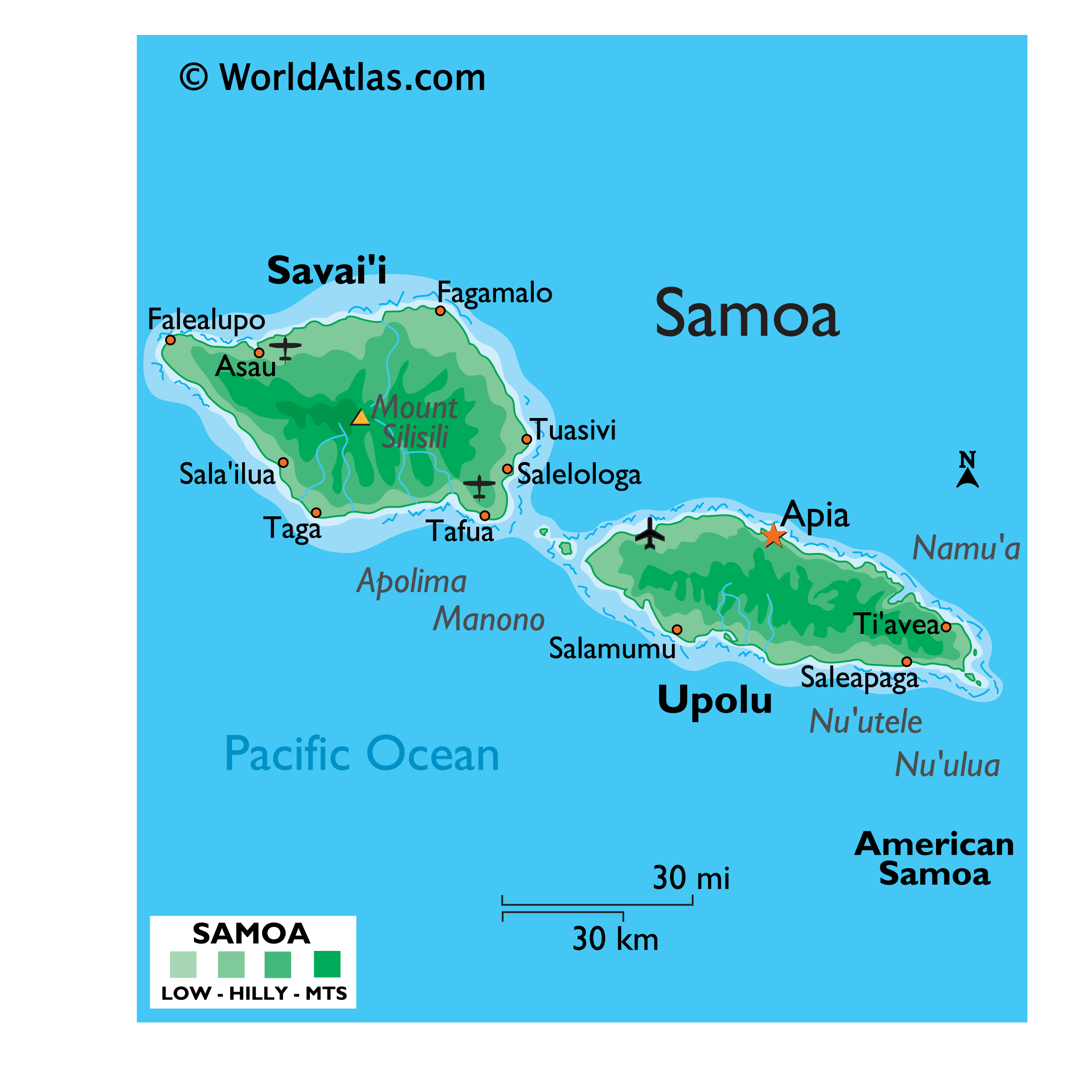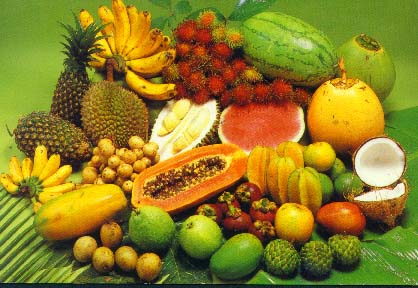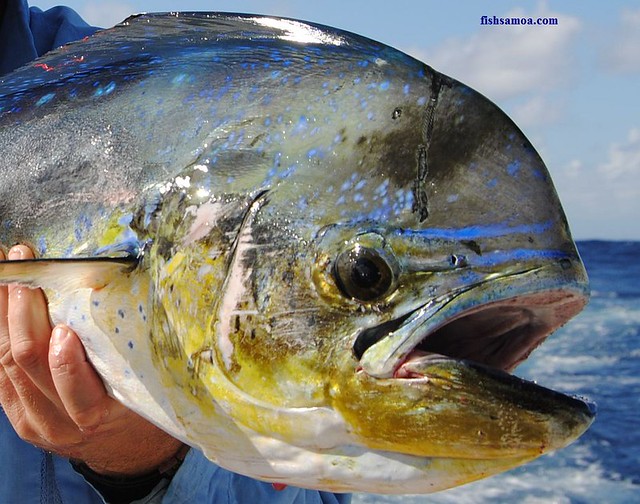On the trip
to Apia we got
to see some more of the island as we travelled overland, taking a different
route to the one we had taken from Aggie Greys to the Sinalei. We travelled
through several villages (including David Tua’s hometown) and passed many family
farms and gardens, some of which had stalls selling their surplus goods. Others
sell their goods through collectives or to exporters based in Apia, where there is a produce/fish market
and a craft market. Both are open six days a week, Monday to Saturday. The
craft market that we spent several hours at was in a large warehouse with rows
of small stalls selling jewellery, carvings, jandals, t-shirts, weaving and
numerous other things. Almost all of the goods seemed targeted to tourists but
there were a lot of local people wandering through as well. The most crowded
area was the food court, particularly at lunch time, but I was really amazed
that almost all the food looked to be deep fried. The only things that weren’t
were banana cake and fresh orange juice as far as I could see. We ended up
going to a café and getting something a bit healthier looking, which had the
bonus of being cooler with air conditioning, as by that time we were beginning
to melt a bit in the heat.
After lunch
we walked the rest of the way trough town on our way to Aggie Greys by the
harbour where we were meeting the taxi van. We found out that Aggie Grey is a
business empire of sorts in Samoa or at least on Upolu, as there are two
locations that the hotels is located at as well as several souvenir/food
outlets we saw with the same name.
On our trek
we followed along the boulevard/shore wall and enjoyed the sea breeze. This
also gave us a great view of the harbour and the church and government
buildings along the road. It was fascinating to see and work out the influences
of various international groups and other countries and how that has changed
over time as seen by the various buildings age, size and quality. One major
feature of Samoa was the number and variety of churches, both in Apia and along the
village roads. The level of pride that the villages and congregations place in
these buildings was evident in the size, structure and “flashiness” of the
buildings. Also the fact that a number of the existing churches were clearly
being added to or upgraded reinforced this perception. It is a major part of
peoples lives in the villages and pretty much everything stops on Sunday’s as
people attend church once or twice on that day, as well as spending time with
family on this ‘rest day’.
My Mum,
Nana, best friend and sister attended a church on the Sunday while we were
there. They travelled to a local Catholic church, near the resort, although
there is a variety nearby. They told me it was a lovely service, although they
couldn’t understand much if any of what was said as it was spoken in Samoan.
But they all felt that the most beautiful things about the experience was
listening to the singing and seeing the ladies clothes and hats. It was also a
great way to see how communities come together and how families interact and
behave. It was a particularly good place to learn about the protocols and
hierarchies of respect. My sister mentioned a little child who was being
disruptive and so was being handed around amongst family to settle him, but in
the end was too much trouble for someone so was sent to the granddad or one of
the other male elders. The elder man gave him a tap which quieted the child and
made him settle and then the granddad gave the child a hug which made the kid
smile again before he settled down for the rest of the service. It was
interesting to hear a story like this to know how children and adults
communicate in these situations.
Another
experience of a part of Samoan culture was the Culture Day that the Sinalei
holds weekly. There is a talk about weaving and other aspects of Samoan culture
such as Ava (kava) drinking and sharing some traditional stories which goes for
one hour, then a talk and demonstration of Umu (hangi) cooking later in the
afternoon. It was interesting to compare what I knew of things from other
countries in the Pacific including New Zealand that have related cultural
aspects and seeing how they connected to what we were being told. The day was
finished with a dinner cooked in the Umu that we had seen earlier and a
cultural performance of dance, singing and fire throwing/dancing. It was very
impressive with the voices of the performers creating such lovely melodies with
the accompaniment of various drums and a guitar. The fire performing was truly amazing
with the youngest performer being only eleven years old.
All the
employees and performers at the resort were local people who all walked to
work. It seemed that the majority of people, from school kids to the elderly
walked everywhere and if they didn’t walk they might take one of the quirky
public buses. We saw these during our day in Apia, with their old school box-y look with
bright paint work and quirky individual names. We were told that the buses were
converted trucks with the shell of the cabin with the passenger seats attached
to the deck on the back of truck. I think these old trucks may have been old
army trucks possibly from World War 2.
As I
mentioned the roads are not particularly crowded, at least they weren’t at the
times we were out. The private vehicles we saw were a mix of older cars and
flatbed trucks that were a mix of European and American made cars, so some were
left and some right hand drive, which was confusing to me. We saw a larger
number of vehicles for the first time when we reached Apia on the market day coming up to a set of
traffic lights. Initially I was a bit surprised to know that Apia had several sets of traffic lights but
then I found out that frequently they don’t work so it didn’t really matter to
the people. It then became a matter of close your eyes and trust the driver, two
of the intersect lights that morning weren’t in operation at the time. Other
then the slightly scary experience at the lights everything else about the
roads was pretty good.
All the
roads are sealed (or at least the ones we travelled on) and seemed in really
good condition but they are a lot narrower then the main roads we are used to
in NZ. The marked speed limit seemed to be quite low but many of the drivers on
the ‘open road’ seemed to be treating it as a guideline more then a rule
(particularly the drivers we had). But for all the ‘playing chicken’ with
oncoming vehicles and dodging dogs, chickens and numerous school children the
roads seemed very safe. I think partly this was because of the frequent speed
bumps to catch out unwary speeders and that people generally seemed like
chilled out friendly drivers.











